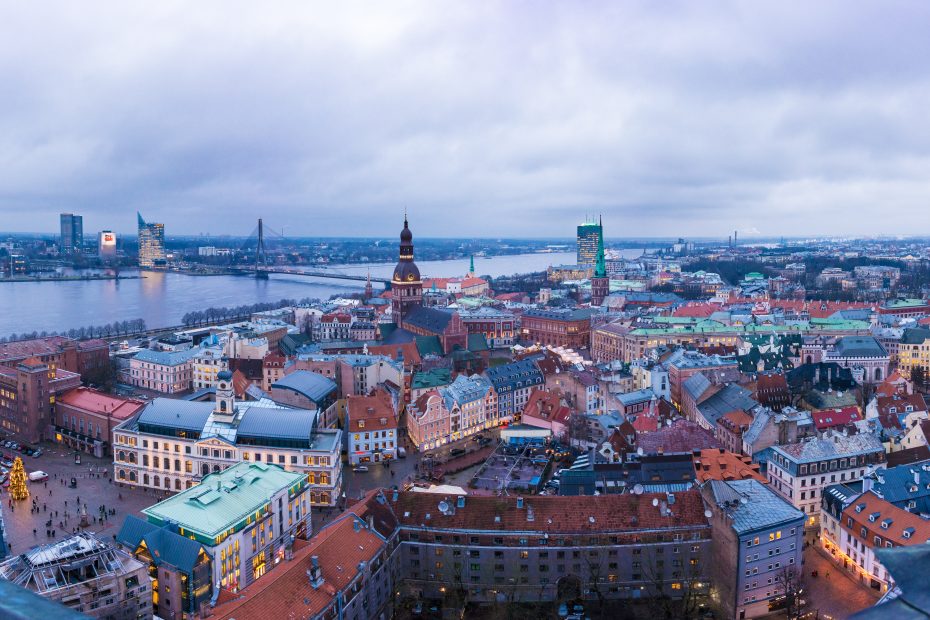| Latvia is a beautiful Baltic country with a rich history and culture. The capital city Riga and the seaside resort Jurmala are popular tourist destinations. However, there are many hidden gems and off-the-beaten-path places waiting to be explored in this scenic country.
|
| Introduction to Latvia |
| Latvia has an interesting history as part of the Baltic region. It was ruled by various powers including Sweden, Poland, and Russia over the centuries. Latvia gained independence in 1918, then was occupied by the Soviet Union during World War II. The country finally regained independence in 1991 after the fall of the Soviet regime. Today, Latvia is thriving as a member of the European Union and NATO. |
| The capital Riga boasts a well-preserved old town, art nouveau architecture, a medieval old town, and a lively food scene. The coastal town Jurmala is known for its sandy beaches, spas, and ornate wooden summer homes. While these are the most popular tourist draws, Latvia offers much more for those willing to venture off the beaten path. |
| Lesser-Known Destinations in Latvia |
| Kemeri National Park |
| Located just an hour from Riga, Kemeri National Park features forest trails, wetlands, and mineral-rich mud baths. The healing sulfuric waters have drawn visitors since the 1700s. Take a therapeutic dip or stroll along the boardwalk while breathing the fresh, pine-scented air. |
| Ligatne Nature Trails |
| The village of Ligatne offers scenic hiking and biking trails that wind through hilly forests. Don’t miss a visit to the Soviet Bunker, a secret underground bunker built to house government officials in case of nuclear attack. This fascinating time capsule provides a glimpse into Latvia’s past. |
| Kuldiga and the Ventas Rumba |
| The charming town of Kuldiga features Europe’s widest waterfall, spanning 240 meters across the river. Nicknamed the “Ventas Rumba,” the rumbling waterfall is an impressive natural wonder. The town itself boasts restored medieval and art nouveau architecture. |
| Cesis and the Gauja National Park |
| The town of Cesis contains a 13th century castle and charming Old Town square surrounded by medieval buildings. Nearby Gauja National Park contains thousands of acres of unspoiled nature, with pine forests, sandstone cliffs, caves, and the Gauja River Valley. It’s wonderful for hiking, cycling, and appreciating Latvia’s natural scenery. |
| Rundale Palace |
| This 18th century Baroque palace located in southern Latvia rivals Versailles in its opulence. Intricately decorated rooms showcase frescoes, gilded ceilings, and period furniture. The formal French gardens provide a scenic backdrop for this historic architectural gem. |
| Liepaja – the city of wind |
| Liepaja lives up to its nickname as the “city where the wind is born,” with constant sea breezes. Located on the Baltic coast, this city combines beautiful beaches with atmospheric abandoned hangars, docks, and warehouses. Pay a visit to Karosta, the former military port area filled with decaying ruins waiting to be explored. |
| The Suiti People and Cultural Space |
| In a remote corner of western Latvia, near the Baltic Sea, lives a unique ethnographic group called the Suiti people. They have maintained colorful cultural traditions in music, weaving, dances, and singing. Visitors can experience Suiti culture by attending a folk concert, purchasing traditional handicrafts, or dining on regional cuisine. |
| The Great Amber Coast |
| Latvia produces over half the world’s amber, the fossilized golden tree resin. The “Great Amber Coast” extends for 140 miles along the Baltic Sea. Learn about amber’s role in local lore and history at the Palanga Botanical Park. Shop for amber jewelry, sculptures, home decor and more in the coastal towns dotted along this amber coast. |
| Tips for Exploring Latvia’s Hidden Gems |
| The best time to visit Latvia is during the warmer months from May to September. Renting a car allows maximum flexibility for getting off the beaten path. Outside major tourist centers, accommodations consist mostly of cozy rural farmhouses, cottages, and campgrounds. Slow down and take the scenic routes between destinations to fully experience Latvia’s natural beauty and local culture. |
| Conclusion |
| Though often overlooked, Latvia offers much to discover beyond its famous capital Riga. Kemeri National Park, medieval towns, Soviet relics, ethnographic regions, and the Great Amber Coast represent just a sampling of the many hidden gems awaiting exploration. With its unspoiled forests, enchanting culture, and warm-hearted people, Latvia rewards those who take the time to wander off the tourist trail. |
| Here are 5 frequently asked questions about discovering Latvia’s hidden gems:
FAQ 1: What is the best way to get around Latvia’s hidden gems? Renting a car allows the most flexibility in exploring rural areas and sites off the beaten path. Buses and trains connect some destinations as well.
FAQ 2: When is the best time of year to visit Latvia? The summer months of May through September bring the mildest weather and longest daylight hours to enjoy Latvia’s nature and outdoor attractions.
FAQ 3: Where can I find unique Latvian handicrafts and folk art? Check out arts and crafts made by local artisans in small towns like Cesis and Kuldiga, or visit the Suiti Cultural Space to buy traditional weavings and embroidery.
FAQ 4: What languages are commonly spoken in rural Latvia? Latvian and Russian are commonly spoken outside main tourist centers. English is less prevalent, so learning a few Latvian phrases will help greatly in interacting with locals.
FAQ 5: Are there any budget accommodations available in the Latvian countryside? Aside from a few upscale manors and lodges, accommodations consist mostly of affordable farmhouse B&Bs, hostels, campgrounds, and budget hotels.
|
